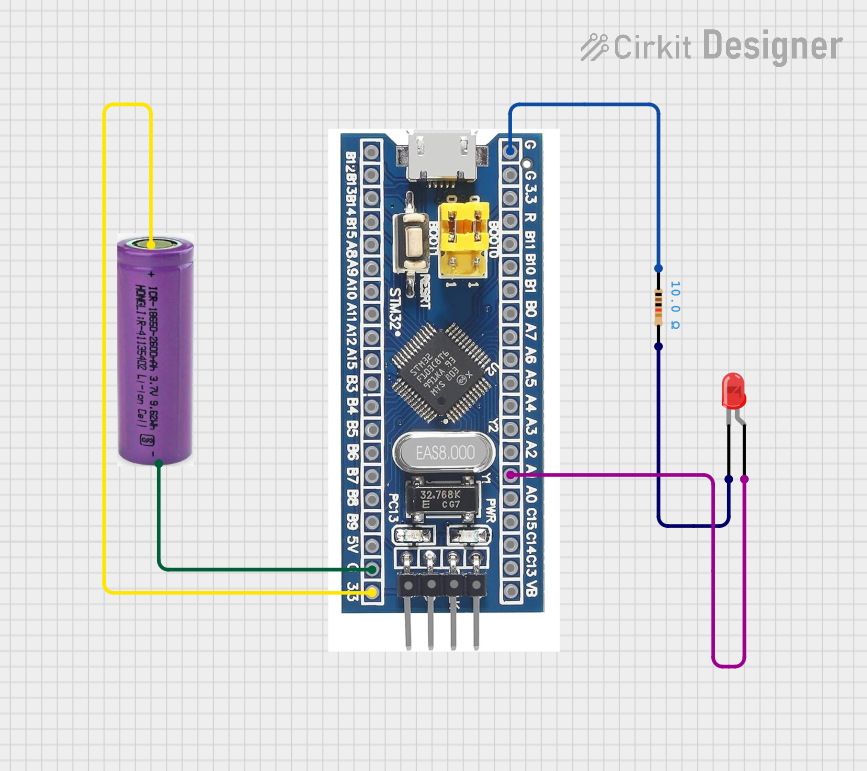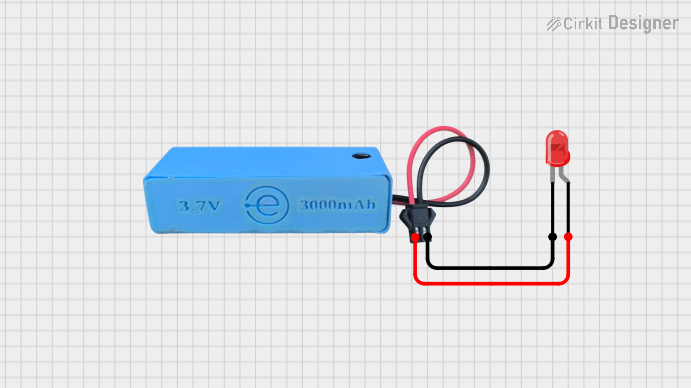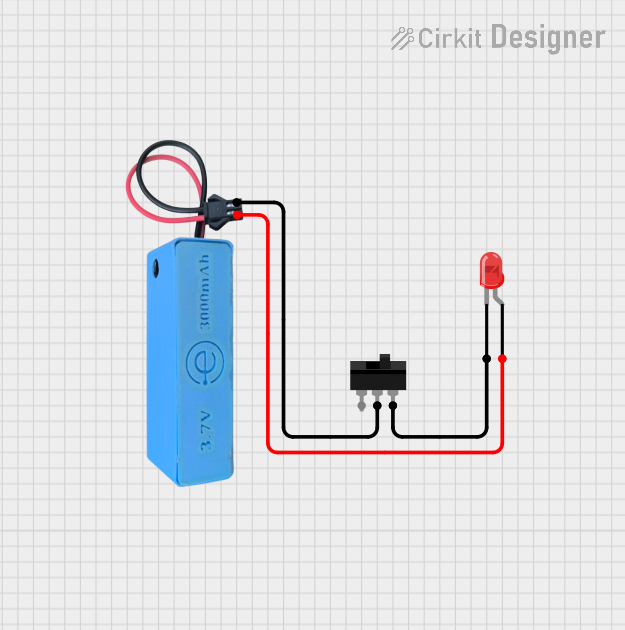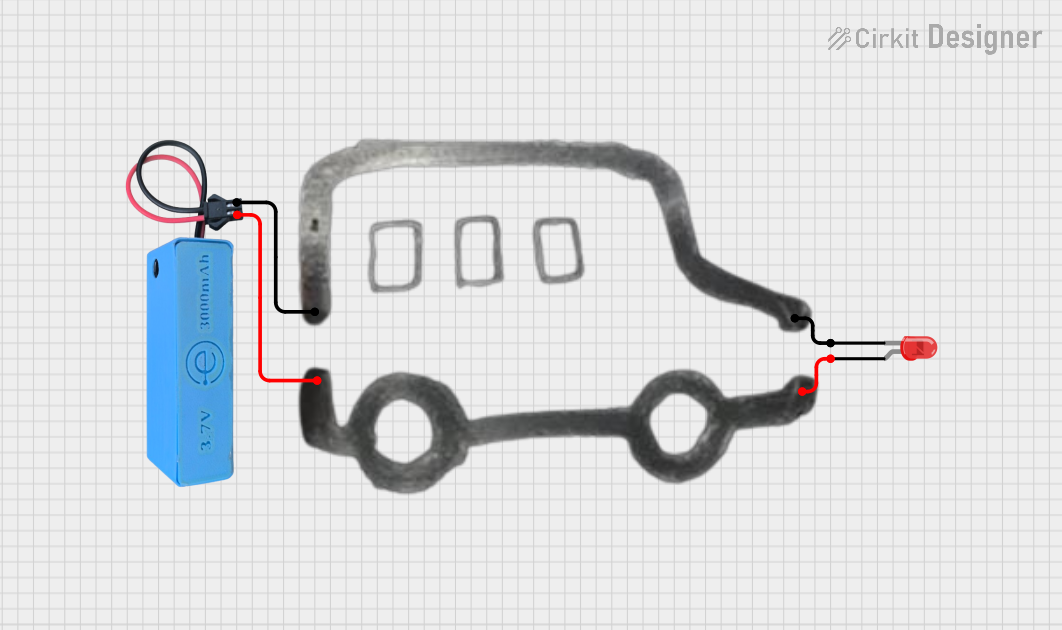
How to Use 3mm LED Red: Examples, Pinouts, and Specs

 Design with 3mm LED Red in Cirkit Designer
Design with 3mm LED Red in Cirkit DesignerIntroduction
The 3mm Red LED (Manufacturer: Bojack, Part ID: 20mA/2-2.2V) is a compact, efficient, and reliable light-emitting diode that emits red light when powered. It is widely used in electronic circuits for visual indicators, status displays, and decorative lighting. Its small size and low power consumption make it ideal for applications in consumer electronics, DIY projects, and embedded systems.
Explore Projects Built with 3mm LED Red

 Open Project in Cirkit Designer
Open Project in Cirkit Designer
 Open Project in Cirkit Designer
Open Project in Cirkit Designer
 Open Project in Cirkit Designer
Open Project in Cirkit Designer
 Open Project in Cirkit Designer
Open Project in Cirkit DesignerExplore Projects Built with 3mm LED Red

 Open Project in Cirkit Designer
Open Project in Cirkit Designer
 Open Project in Cirkit Designer
Open Project in Cirkit Designer
 Open Project in Cirkit Designer
Open Project in Cirkit Designer
 Open Project in Cirkit Designer
Open Project in Cirkit DesignerCommon Applications
- Power and status indicators in electronic devices
- Signal and warning lights
- DIY electronics and hobby projects
- Displays and decorative lighting
- Embedded systems and microcontroller-based circuits
Technical Specifications
Below are the key technical details for the Bojack 3mm Red LED:
| Parameter | Value |
|---|---|
| Manufacturer | Bojack |
| Part ID | 20mA/2-2.2V |
| LED Type | 3mm Red Light-Emitting Diode |
| Forward Voltage (Vf) | 2.0V to 2.2V |
| Forward Current (If) | 20mA (maximum) |
| Reverse Voltage (Vr) | 5V (maximum) |
| Power Dissipation | 75mW (maximum) |
| Viewing Angle | 20° to 30° |
| Wavelength | 620-630nm (red light) |
| Operating Temperature | -40°C to +85°C |
| Lead Soldering Temp. | 260°C for 5 seconds |
Pin Configuration
The 3mm Red LED has two pins: the Anode (positive) and the Cathode (negative). The longer pin is the Anode, and the shorter pin is the Cathode.
| Pin | Name | Description |
|---|---|---|
| 1 | Anode (+) | Connect to the positive terminal of the power supply or circuit. |
| 2 | Cathode (-) | Connect to the negative terminal or ground. |
Usage Instructions
How to Use the 3mm Red LED in a Circuit
Determine the Resistor Value: To prevent damage to the LED, always use a current-limiting resistor in series with the LED. The resistor value can be calculated using Ohm's Law: [ R = \frac{V_{supply} - V_f}{I_f} ]
- (V_{supply}): Supply voltage
- (V_f): Forward voltage of the LED (2.0V to 2.2V)
- (I_f): Desired forward current (typically 20mA or 0.02A)
For example, if (V_{supply} = 5V): [ R = \frac{5V - 2.2V}{0.02A} = 140\Omega ] Use the nearest standard resistor value (e.g., 150Ω).
Connect the LED:
- Connect the Anode to the positive terminal of the power supply through the resistor.
- Connect the Cathode to the ground or negative terminal.
Power the Circuit: Apply the appropriate voltage to the circuit. The LED will emit red light when powered correctly.
Important Considerations
- Polarity: LEDs are polarized components. Reversing the polarity may damage the LED.
- Current Limiting: Always use a resistor to limit the current through the LED to prevent overheating or failure.
- Brightness Control: Use a lower current (e.g., 10mA) for dimmer light or a pulse-width modulation (PWM) signal for adjustable brightness.
- Operating Conditions: Ensure the LED operates within its specified voltage and current ratings.
Example: Connecting the 3mm Red LED to an Arduino UNO
Below is an example of how to connect and control the 3mm Red LED using an Arduino UNO:
Circuit Diagram
- Connect the Anode of the LED to Arduino pin 9 through a 220Ω resistor.
- Connect the Cathode to the Arduino's GND pin.
Arduino Code
// Example code to blink a 3mm Red LED connected to pin 9 of Arduino UNO
const int ledPin = 9; // Define the pin connected to the LED
void setup() {
pinMode(ledPin, OUTPUT); // Set pin 9 as an output
}
void loop() {
digitalWrite(ledPin, HIGH); // Turn the LED on
delay(1000); // Wait for 1 second
digitalWrite(ledPin, LOW); // Turn the LED off
delay(1000); // Wait for 1 second
}
Troubleshooting and FAQs
Common Issues and Solutions
LED Does Not Light Up:
Cause: Incorrect polarity.
Solution: Ensure the Anode is connected to the positive terminal and the Cathode to the ground.
Cause: No current-limiting resistor or incorrect resistor value.
Solution: Use a resistor with the correct value (e.g., 150Ω for a 5V supply).
LED is Dim:
- Cause: Insufficient current.
- Solution: Check the resistor value and ensure the current is within the recommended range (20mA).
LED Overheats or Burns Out:
- Cause: Excessive current.
- Solution: Use a proper current-limiting resistor to prevent overcurrent.
LED Flickers:
- Cause: Unstable power supply or loose connections.
- Solution: Ensure a stable power source and secure all connections.
FAQs
Q1: Can I connect the LED directly to a 3.3V or 5V power supply?
A1: No, you must use a current-limiting resistor to prevent excessive current from damaging the LED.
Q2: Can I use the 3mm Red LED with a PWM signal?
A2: Yes, the LED can be dimmed or controlled using a PWM signal from a microcontroller like an Arduino.
Q3: What happens if I reverse the polarity of the LED?
A3: The LED will not light up, and prolonged reverse voltage may damage it.
Q4: Can I use this LED for high-power applications?
A4: No, this LED is designed for low-power applications with a maximum current of 20mA.
By following this documentation, you can effectively use the Bojack 3mm Red LED in your projects while ensuring optimal performance and longevity.